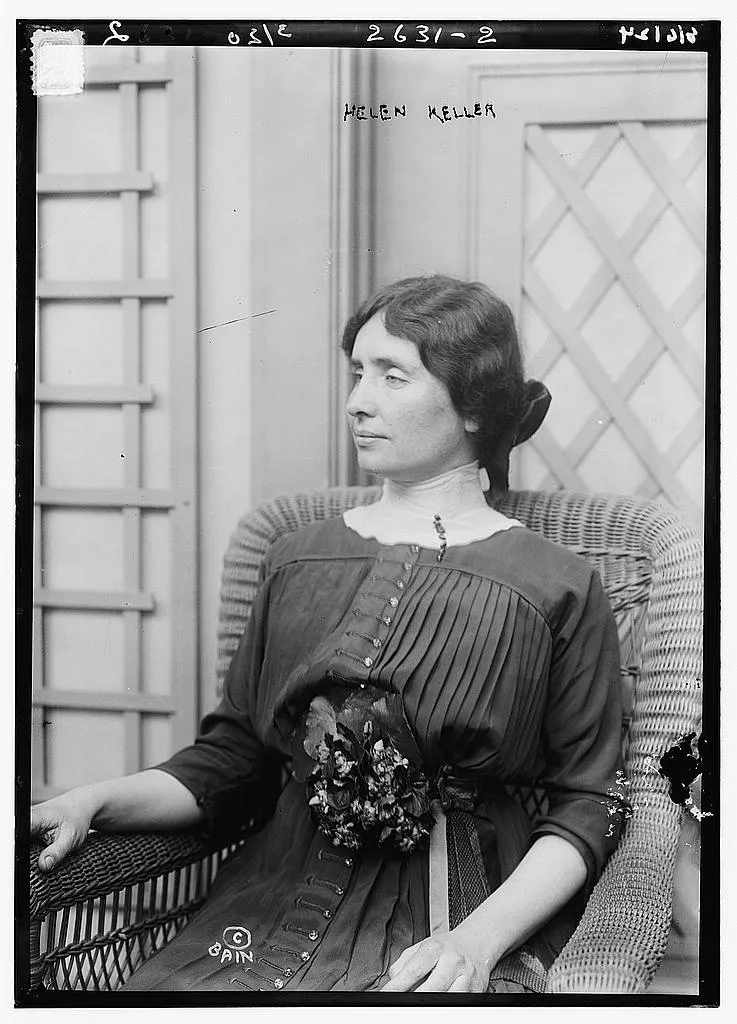Three Big Ableist Myths About the Life of Helen Keller
The simple story that’s usually told about her today reflects cultural biases that have nothing to do with her actual life
/https://tf-cmsv2-smithsonianmag-media.s3.amazonaws.com/filer/80/1b/801b5790-de77-4f5a-be6f-c82dd073fbd5/keller.jpg)
Helen Keller got a lot done in her lifetime. Much of it had nothing to do with her disability, though some of it did. But her stature as a public figure has created myths that reveal as much about longstanding societal biases as they do about her real life.
As schoolchildren learn, Keller lived most of her life as a deaf-blind woman. She was born—on this day in 1880—with the abilities to see and hear, but when she was less than two years old she contracted an illness–perhaps meningitis or scarlet fever, according to Daven Hiskey for Today I Found Out–that left her unable to see or hear. But beyond that simple fact, there’s a lot of misinformation out there.
Myth: She wasn’t able to do anything until she met Anne Sullivan
It’s commonly thought that Keller “had no way of communicating with her family until her teacher arrived around her seventh birthday,” writes Hiskey. However, Keller–who had no cognitive impairments–was able to use about 60 different signs to make herself understood.
She mostly used those to communicate with her friend Martha Washington, who was the daughter of the Keller family’s cook. “We spent a great deal of time in the kitchen, kneading dough balls, helping make ice-cream, grinding coffee, quarreling over the cake-bowl and feeding the hens and turkeys that swarmed about the kitchen steps,” Keller wrote in The Story of My Life.
Keller’s relationship with Washington was shaped by their different social statuses, she wrote, and the fact that Keller knew how to make her wants known: “It pleased me to domineer over her, and she generally submitted to my tyranny rather than risk a hand-to-hand encounter,” she wrote.
It is true, though, that during these early years Keller’s family didn’t think she could ever be educated, Hiskey writes. When she was six, though, her mother pursued the idea of her education and was eventually introduced (by Alexander Graham Bell, no less) to the Perkins Institute for the Blind, which landed Anne Sullivan as a companion for Keller.
Myth: She was apolitical
In fact, Keller had strong personal politics that even landed her on a 1949 list of Communist Party members compiled by the FBI. For the record, though Keller was a true-blue socialist, she was not a member of the Communist Party.
When she was sixteen, in 1896, she was catapulted to national fame, writes Keith Rosenthal for the International Socialist Review. By 1904, when she graduated from Radcliffe College, she was internationally famous. She joined the Socialist Party of America a few years later and began advocating for revolutionary change. “She noticed the close relationship between disability and poverty, and blamed capitalism and poor industrial conditions for both,” writes Sascha Cohen for Time.
But even though she had strong politics and a national voice, nobody took her opinions seriously. “Newspaper editors would use her disability as a means to dismiss her politics and to dissuade people from taking her seriously,” writes Rosenthal. “Her radicalism, conservative writers would aver, was a product of the political ‘mistakes [which] spring out of the manifest limitations of her development.’”
Despite this, she was a leading light of the American socialist movement, Rosenthal writes. Among many other causes, she championed pacifism and the U.S. staying out of World War I.

Myth: She had no romantic life
Like many other people, Keller wanted a life partner as well as romance. And once, it seemed like that desire might be fulfilled. She was in her thirties, world-famous and still living with her supporter and companion Anne Sullivan, who by this time had married and was estranged from her husband.
Sullivan became very sick and had to take some time off for the sake of her health, so she was unable to act as Keller’s secretary. Peter Fagan, a twenty-nine year old reporter for the Boston Herald, stepped in to act in her place. The pair fell in love and made plans to marry.
“Her extended family vigorously squashed the relationship,” writes Kim E. Nielsen in Helen Keller: Selected Writings. “All felt adamantly that marriage and child-bearing were not options for a deaf-blind woman.” Under pressure from her family and without the support of her companion, “she apparently acquiesced to this belief,” Nielsen writes. “Peter Fagan disappeared from her life.”
“How alone and unprepared I often feel, especially when I wake in the night!” she wrote to Sullivan during this time.
“Her triumph over multiple disabilities and her enormous celebrity had trapped her within a constricting saintliness and an image of purity,” writes Rosie Sultan for Huffington Post. “Though she could speak up about equality, the rights of others–even, occasionally, sexuality–she was not granted the rights she sought for others.”